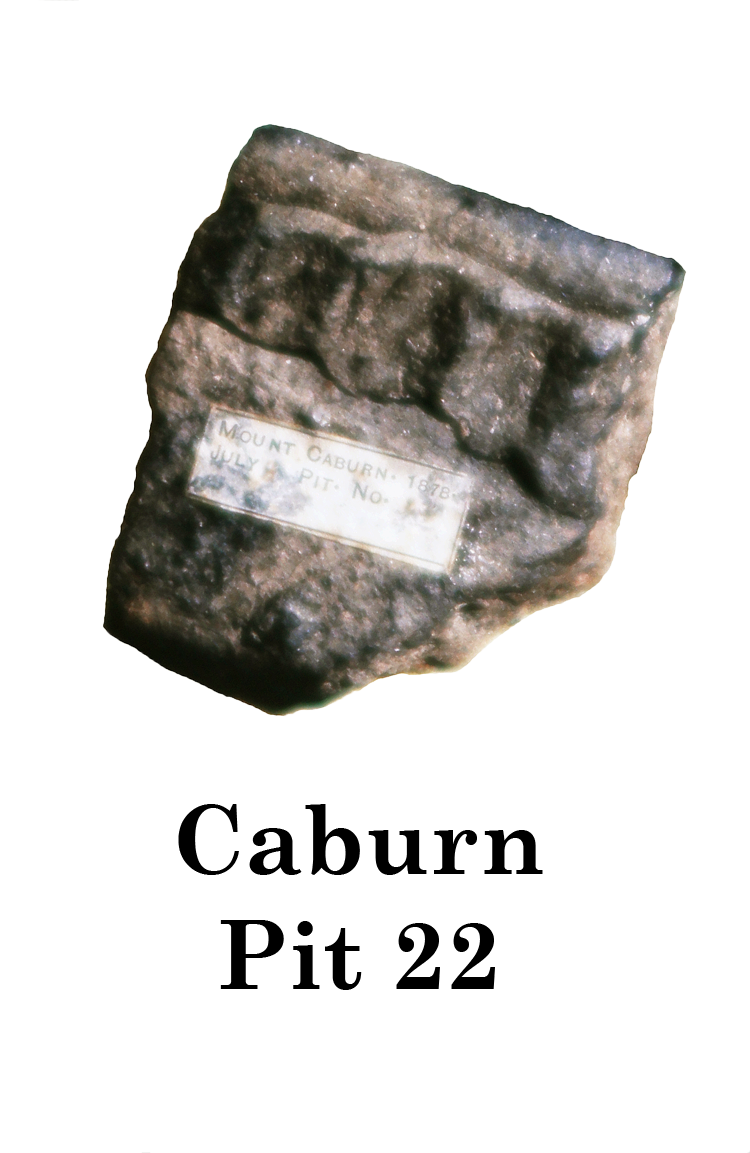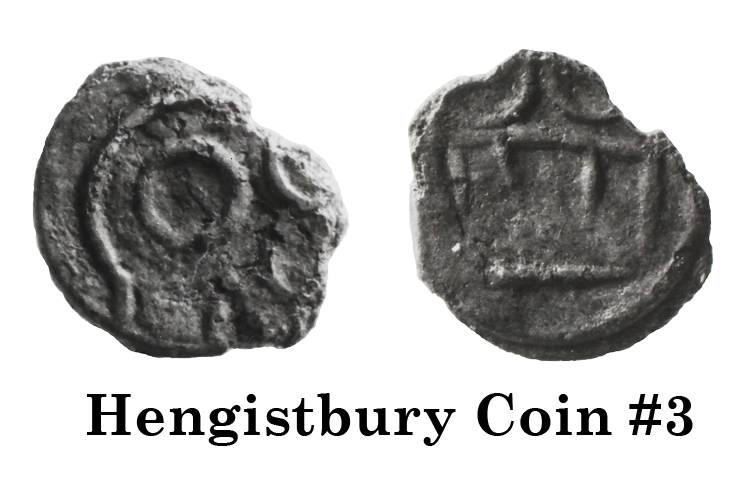Numismatic Articles
Van Arsdell 1993f (Info)
The Date of the Kentish Cast Bronze Coinage – Evidence from Hengistbury and The Caburn
By Robert D. Van Arsdell
Coins are usually the most closely-dated objects found during archaeological excavations. They typically serve as the prime dating evidence for a site. The chronology of uninscribed coins is problematic, however, and continues to be a controversial topic in Ancient British numismatics. Some attempts have been made to reverse the process and use archaeological evidence to date the coins. This technique poses even greater problems.
One would think it would be a simple matter to search through excavation reports, find coins that had been found during excavations, and date them using associated material found in the same stratigraphic layers. The Kentish cast bronze coinage shows this is possible, but it is not a straightforward task.
Most numismatists agree that the Kentish cast bronzes are the earliest British-made coins, and that the first of them were produced about 100 BC (1, 2, 3, 4). Despite the agreement, there is little proof for such a date. Two excavations, one at The Caburn and the other at Hengistbury Head, produced Kentish coins in association with other material and held out the possibility of proving the early date.
The Caburn
General Pitt-Rivers uncovered five cast bronzes at The Caburn, a hillfort in Sussex (5). The coins, of V125 type, were found in four pits. Two were found at the bottom of pit 37 and another was thought to have come from the bottom of pit 23 (it was found on backfilling the pit). The fourth was found just inside the top of pit 29. In pit 22, on the bottom, were found the fifth coin and a piece of locally-made pottery. Although many objects were found in the pits, the potsherd was the only one that offered a close-dating possibility.
Finds at the bottoms of Iron Age pits are a recurring phenomenon and are thought to be part of a complex ritual behavior (6, 7, 8). One hypothesis is that they represent a propitiatory offering deposited when abandoning a pit. The coin and potsherd found in pit 22 provided a unique opportunity to date the coin. The two artifacts would likely have been deposited simultaneously, and the pottery appeared to be a datable type, judging from the illustration in Pitt-Rivers’ report.

In August, 1986, I visited the Salisbury and Wiltshire Museum to reassemble the contents of the Caburn pits. Pitt-Rivers had originally placed the finds in his personal museum at Farnham; when this was closed, the archaeological material was organized at Salisbury and assembling the pit contents was a simple matter.
Dating the potsherd proved helpful, but close dating proved impossible. The sherd showed mostly primary breakage (sharp breaks, not worn down by abrasion) indicating it had been deposited not longer after the pot had been broken. Unfortunately, it could not be dated closer than “first century BC” in the local pottery sequence (9). Thus, the sherd reasonably demonstrated that Kentish cast bronzes existed before the turn of the millennium, but evidence for a pre-Gallic War date was not to be had.
Hengistbury Head
At Hengistbury Head, Dr. David Peacock had uncovered cast bronzes during rescue excavations in 1971. The excavation results have not been published, but the coin records have been assessed (10, 11).

Seven Kentish cast bronzes were found sealed in one of the lower layers in an early first century BC Iron Age site. Although the associated finds are not clearly identified in the record, it is known that sherds of wine amphorae were found (12). The sherds are felt to be of Dressel 1a type, dated to the first half of the first century BC (13), and most likely the earlier part of the century. Despite the uncertainties of the Hengistbury material, it represents the best dating dating evidence we have today for the Kentish cast bronzes.
The Hengistbury coins are all of Cantian D type:
- Badly preserved, probably V125-3
- Similar to V123-1, but head faces left
- V129-1 type
- Badly preserved, probably V125-1
- V125-1 type
- Badly preserved, probably V129-1
- Either V125-1 or V129-1 type
These are not the earliest of the Kentish types (14, 15, 16), they come rather later in the series, after a period of experimentation. Their appearance in a layer dated to the first half of the first century BC suggests an early first century BC date for the inception of the series. Thus, the Hengistbury finds strongly support, but do not absolutely prove the Kentish series began around 100 BC.
Thus, the two excavations, taken together, reasonably demonstrate the Kentish cast bronzes existed during the first century BC. The Hengistbury finds demonstrate they existed in the first half of the century and strongly suggest the series started at the beginning of the century. The problems of dating pottery and amphorae, the uncertainties of site recording and publication and the difficulty of identifying ill-preserved coins all conspire to prevent closer dating based on the archaeological contexts.
I would like to thank Professor Barry Cunliffe for evaluation of the Caburn pottery and to Dr. Clare Conybeare of the Salisbury and Wiltshire Museum for kind help with the Pitt-Rivers material in general.
References:
- Haselgrove, C. C., 1987a, Iron Age Coinage in South East England, the archaeological context, p. 100.
- Haselgrove, C. C., 1988b, “The Archaeology of the British Potin Coinage”, Arch. J., vol. 145, p. 106.
- Allen, D. F., 1971a, “British Potin Coins: a Review”, in Jesson, M. and Hill, D., The Iron Ages and its Hill-forts, p. 142.
- Van Arsdell, R. D., 1984d, “A Note on the Date of the British Potin Coinage”, NCIRC, October, 1984, p. 257-258.
- Pitt-Rivers, A., 1881, Excavations at Mount Caburn Camp, near Lewes, Archaeologia, Supplementary Relic Table.
- Cunliffe, B. W. and Poole, C., 1991, Danebury an Iron Age Hillfort in Hampshire, vol. 4, p. 162.
- Cunliffe, B. W. and Poole, C., 1991, Danebury an Iron Age Hillfort in Hampshire, vol. 5, p. 482.
- Cunliffe, B. W., 1993, Wessex to 1000 A.D. p. 196.
- Cunliffe, B. W., pers. comm.
- Brown, L., 1987, “Description of stratigraphy, 1970-1”, in Cunliffe, B. W., Hengistbury Head Dorset, vol. 1, microfiche 4:E3.
- Haselgrove, C. C., 1988b, “The Archaeology of the British Potin Coinage”, Arch. J., vol. 145, microfiche M1/02 and M1/03.
- Haselgrove, C. C., 1988b, ibid, microfiche M1/03.
- Peacock, D. P. S., 1971, “Roman Amphorae in Pre-Roman Britain”; in Jesson, M. and Hill, D., The Iron Age and its Hill-forts, p. 165.
- Haselgrove, C. C., 1988,b “The Archaeology of the British Potin Coinage”, Arch. J., vol. 145, p. 102 and 108.
- Allen, D. F., 1971a, “British Potin Coins: a Review”, in Jesson, M. and Hill, D., The Iron Ages and its Hill-forts, p. 141-143.
- Van Arsdell, R. D., 1989a, Celtic Coinage of Britain, p. 77-79.
